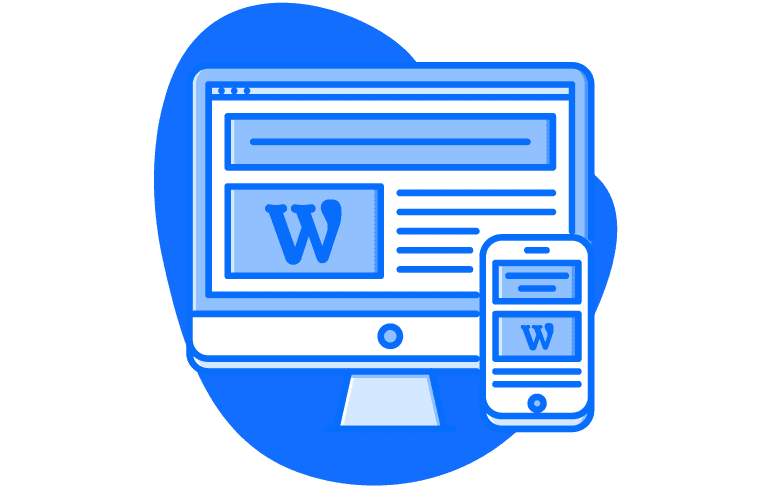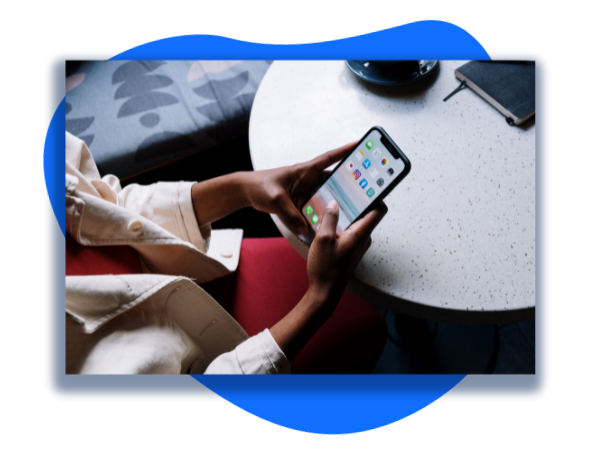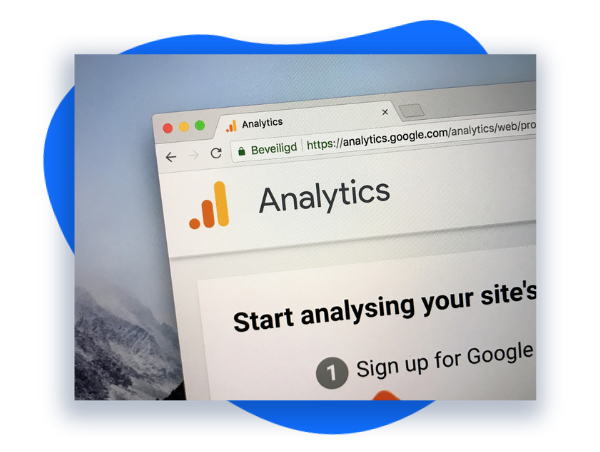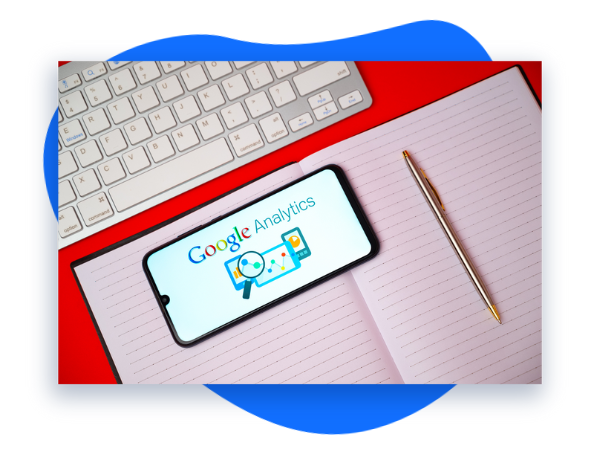Writing a request for proposal (RFP) may seem like a simple task. You’re presenting an opportunity for new business to agencies, and choosing from the responses that best match your goals and restrictions. They should be jumping at the chance to take on your project and know how to sell themselves, right? The reality in 2024 is that successful web design agencies regularly receive RFPs, and put a good deal of effort into crafting their responses. If your specifications aren’t clear, or the project isn’t properly described, the lack of communication could leave you with a varying set of proposals that are difficult to compare. Worse still, you may miss out on responses entirely if the RFP doesn’t seem like it presents a feasible project.
A good web design RFP takes forethought and taking a step back to think about what a new website could mean for your company, and then accurately conveying that message. Additionally, an RFP should set a framework for the proposal and the specific information you’ll need back to help make your decision on vendor selection.
In this guide we’ll cover:
What is a Request for Proposal?
Ask big picture questions…
When explaining what a request for proposal is it’s important to underscore what it is not. An RFP should not be used as a way to test the waters to see how much a new website might cost you. Often price ranges for web development can be found by emailing individual agencies. While receiving a quote is important in determining which vendor to select, the RFP and proposal process should be a way for both agency and client to understand the capabilities and compatibility of one another.
Simply put an RFP notifies a vendor of a project availability, describes the project and its parameters, and lets potential vendors know what information to respond with.
The process of creating an RFP can be broken down into 3 basic stages:
Learn
Take the opportunity to step back and understand your company’s online needs and current digital infrastructure. Ask big picture questions…
- How does your business currently benefit from your website?
- What could be improved?
- What is on the wishlist from different parts of your company (marketing, sales, customer service, etc.)?
- How does your company make money online?
- What is a realistic timeframe for your team?
- What is the available project budget?
Plan
Think about how the website design process will unfold on your end.
- What needs to be done before partnership, before launch?
- What functionality is desired and what takes priority?
- What employees will be involved with the website before and after launch (and what is their available bandwidth)?
Write
Take all you’ve gathered and compile a final request for proposal letter or email. We’ve included a formatted sample RFP template below to help!
Why Should You Create a Website RFP?
Understand the capabilities and compatibility of one another
Rather than contacting each agency directly to ask about how partnership on a web design project could work, an RFP document formalizes the selection process. It allows you to clarify the project goals, explain criteria for vendor selection, and articulate important details like desired functionality and project constraints. When the vendor knows the full scope of the project it allows for more accurate quotes. Furthermore, a formalized RFP allows all vendors an equal playing field to pitch their services and vision for your website.
- Clarifies project goals, functionality and project constraints
- Allows for more accurate quotes
- Provides deeper insights into vendor capabilities, expertise and background
When Should You Create a Website RFP?
The most obvious case for creating a web design RFP is when you know you need a new website or website redesign, but don’t have a preferred or referred vendor you’d like to work with. Even if you do have a preference for a website design partner, an RFP can be useful for doing due diligence and exploring all options. You’ll also gain a better understanding of the marketplace cost for the level of website development you’re seeking.
- To get the attention of an established and reputable web design agency
- To get detailed background information to compare agencies
- To see if your website project is feasible at current scope/budget
When should you skip the RFP process?
The most obvious example is when you have a budget that would limit serious interest from established website design agencies. If you determine you have major issues to overcome internally before building a new website, then it may be best to solve those first before starting the vendor selection process.
For example…
- A budget that would limit serious interest from established website design agencies
- No staff in place to provide feedback and provide final website content
- No staff in place to run or manage new website once live
- No dedicated project manager on your team
- Legacy systems that won’t properly integrate with a new website
- Very limited timeframe (less than 3 months)
Here is a good article on the cons of an RFP process.
How to Format Your Website RFP
Organize Your Request
Below is a suggested format for structuring your RFP. This should serve as a guide to take what you’ve learned about your company and present your website needs clearly to vendors. While your document doesn’t need to follow this exact format, we’ll cover critical information that should be in any website request for proposal.
Sections/Structure of RFP
Answering key project questions…
1. Introduction/Company Background
An opening statement that will give a brief description of why your company needs to create a new website, and what the overall project will entail. This section is important as it will be the first thing the vendor reads, and will determine whether or not they are capable of, or interested in, taking on the project. If an agency regularly receives a large number of RFPs this section can even determine whether or not they take the time to finish reading yours!Be honest about your team’s expertise and familiarity with website design, and any expected pain points. This is your first chance to introduce your company, your culture and your brand. While this may seem like a minor formality, collaborative workflow and culture fit are important factors in the success of a major project like building a new website or organizing a website redesign.
Example:
“Company ABC is seeking a vendor partner to redesign and refresh our current website at https://companyabc.com/.
You have been selected as a potential vendor to respond and prepare a proposal to accomplish this task which includes timeline, cost, and deliverables. The following website redesign RFP includes a background of our organization and describes the purpose of the redesign, its desired functionality, and specific requests relating to the proposal. We understand that details may be subject to change upon vendor recommendation and / or research of more optimal solutions. In your proposal, please feel free to suggest alternatives.
PROJECT OVERVIEW
Company ABC’s current website is outdated and needs a refresh to accomplish our current marketing objectives. Our primary goals are to strengthen our online presence, build brand awareness and provide an overview of our services in order to provide credibility to our clients and prospects. Additionally, we want our redesigned website to reflect our culture and values to attract potential new hires. The site is currently built in WordPress but we are open to other platforms as an alternative, if there are solutions that provides better functionality and ease of use. We would like to be able to make minor edits to the content in-house so the back end needs to be user-friendly (areas include new hires, project experience, bios). Additionally, our site does not currently provide analytics and we’d like to build into the new site for tracking, monitoring effectiveness and measuring future lead generating campaigns.FIRM BACKGROUND
Company ABC’s is a commercial real estate firm offering Project Management, Move Management and Capital Project Management for owners/occupiers and landlords. We successfully deliver projects from inception to completion serving as the client’s representative and advocate, leading their project delivery from concept through occupation. Our team has a track record of successful clients and has grown to over 60 project managers serving clients across the US and we are currently expanding into new markets.”
2. Budget Range
List your budget or expected price range for the website project early on in the RFP as it is a critical factor for agencies to gauge their interest. You’ll find out quickly if a company is out of your ballpark, or not able to accommodate a project of your size, and avoid unnecessary back and forth on project details. A budget also helps an agency recommend specific solutions that will work within your budget, and gives a framework for how best to allocate their time and resources.
A budget range may be hard to calculate on your own, and additional research may be necessary. The biggest factor in cost will often be how many hours from the vendor will be required. Ecommerce projects in general require significantly more development time. Online forums, articles and references from other companies can offer a good starting point.
Be sure to factor in all the services needed. Also, identify what “must have” items they can include in the proposal based on your budget range. Itemize all other optional items as add-ons.
Examples of RFP Budget Statements:
“We are budgeting $30,000 – $60,000 for this website, with a potential additional $5,000 – $10,000 for a social media component, and a potential additional $5,000 – $10,000 for a digital marketing component. When constructing the budget, please list the website, social media and digital marketing as separate components.”
“The results of Phase One will inform a budget of the full development and launch of the website, and therefore, we expect that the selected agency partner will work with us to identify costs for Phase Two. The budget for Phase One is between $25,000 and $50,000, depending on the services offered.”
Don’t have an idea where to start on your website project budget? Try these methods before creating your RFP.
- Clutch is a great resource. Search top agencies and read client reviews where project budgets are often mentioned.
- Use our website cost calculator along with insight into website design pricing with our in-depth small business website cost article here.
- Call a selection of agencies directly to get a rough idea. Be transparent – vendors like to know limitations so they don’t waste your time and theirs. You can easily get a rough ballpark and website examples.
- Networking events and business meetups in your industry/niche can be a good way to get more informal responses from what other businesses, professionals, and groups have paid for their websites.
Remember, don’t use an RFP just to price shop. That’s an awful waste of your time and the agencies!
3. Timeline & Important Deadlines
Present a realistic timeframe for the project and include an expected launch date. A good time frame accounts for review and approval processes and accommodates multiple rounds of revisions. Think about how fast your organization can turn around this type of feedback.
RFP Release Date
The date you’ve sent out the RFP. This lets vendors see how recent the request is.
Response Deadline
When are you expecting proposals back by.
Vendor Selection
When should vendors expect to be notified of your decision? What are the next steps in the selection process?
Project Kickoff
What date should the vendor have their team ready to begin work on the project?
Desired Launch Goal Date
Be realistic! Keep in mind a typical website project takes at least 10-14 weeks, (14-18 for ecommerce). If you want to go live a month from kickoff chances are 95% of companies will pass.
4. Identify Challenges
Define what issues this project and a new website will solve.
Examples:
“While we feel the current site captures our tagline message and tone, it is not a tone that we feel will transfer well to our new target audiences and industries.”
“Improved navigation – Vendor should simplify what’s up on our website and create a very attractive, easy-to-navigate website that should allow people to fulfill their goals without getting lost”
“More targeted use of SEO – Vendor should also include keywords and tags on pages so that our search functionality should be exceptional, and should allow our site visitors to complete their goals”
“Calls To Actions are not converting enough leads”
5. Lay Out Goals
Clearly illustrate the goals for this project (increased sales, more visitors, better media presentation, improved branding, etc.).
Examples:
“Our top priority is generating sales-ready leads for our sales team. Our secondary goals are educating prospective buyers on our services and providing helpful and engaging resources.”
“Our primary goals are to strengthen our online presence, build brand awareness and provide an overview of our services in order to provide credibility to our clients and prospects.”
6. Audience
Who are Your Customers?
This is an important question to answer to help the web design vendor develop a vision of how the website should serve its target audience, and can impact things like website features, content resources, media galleries and user experience design. Illustrate as best you can who your customers and web visitors are with any demographics or personas you’ve developed on your end. This could be as broad of information as age range, income level, and geographic region down to more refined details like lifestyle choices, purchase habits, brand affiliations, preferred content, and more.
What Goes Into a Sale or Conversion?
Describe all the steps that go into a sale for your company (both offline and online) from lead to final purchase. What people on your team are involved? What resources are used? Is there a CRM system used to nurture business leads? What happens with customers and customer data after purchase?
Think also about any actions online that could be considered a successful conversion. That is, what actions have measurable value and which you’ll benefit from increasing. This could be filling out a sales form for business lead generation, reading a visitor subscribing to a newsletter, reading a specific piece of content, creating an account, clicking to follow your company on social media, and more. Knowing what conversions are important will allow the vendor agency to craft a website plan that focuses on maximizing those conversions.
Examples:
Decision Makers
Decision makers are far less interested in the nitty gritty, and instead focus on vision. They want to see use cases, both that reflect what their division is currently working on, and what they might work on in the future, so they can determine future value adds. They want to learn about who we are to see if its trustworthy to work with, and see who else has worked with them. They’ll check for thought leadership in the blog and other documents, as well.Most Interested in Pages and Content On…
Plans
About
BlogInvestors
Investors are interested in the potential of your technology, and the company’s growth. Demonstrating your command over your existing market share on the main site, with excitable talk of the future in blogs and research is how you can reach Investors.Most Interested in Pages and Content On…
Homepage
About
ResourcesJob Seekers
Job Seekers are the engineers, coders, and designers who are interested in future-facing careers with you. Excite them about your mission and guide them easily to the careers page to get their resumes flowing in.Most Interested in Pages and Content On…
About
Solutions
Careers
7. Desired Website/ Requirements
Current Web Presence (Website, Social Media, Advertising, Forums, etc.)
Beyond just your website, paint a complete picture of the online presence of your company and/or brands. How does social media, advertising, customer service, and more tie into your current web strategy? Think about all the parts of your business that currently touch online.
Be sure to answer these basic questions:
- What works well with your current online presence?
- What do you like and what don’t you like about your website?
- What’s restricting your growth online?
Website vendors can use this information to get a much more accurate and in depth picture of how all the moving parts of your web presence fit together. This helps them understand what functionality can be optimized on the website, and what existing systems and workflows need to be accounted for and/or retained.
Describe what your ideal website solution will look like! Add your feature wishlist here, and be sure to identify which items are critical needs and which would be ‘nice to have’. This is also where you’ll want to inform the vendor of any upcoming business changes that you’d like the website to play a role in (ex: new retail location, business acquisition or merger, major marketing campaign, holiday sales promotion, etc.).
Some aspects of your ideal website to consider…
- Brand identity – do you need style guides? new logo?
- Content strategy – do you need help?
- Site architecture – what sections should there be, how are they organized?
- SEO Keyword Analysis – is being found in Google important?
- SEO Copywriting – do you have copywriters that will write your website content or need help?
- 301 re-directs of old URL’s – do you plan on changing domains? this is needed to not lose SEO rankings, unless your website is a start up.
- User experience testing – need to stay objective? validating your assumptions with your target audience is a great way to build a better product.
- Homepage interaction (where does a customer go from the homepage?)
- CRM & Email marketing integrations – using Salesforce, MailChimp or something else? Make sure to take note!
- Analytics Integrations – should be standard, example: Google Analytics, Google Search Console, etc.
- Lead generation – how many different forms do you need?
- Social media engagement – do you need to display a social media feed on a page? drive traffic to a particular channel?
- Cart and checkout (for ecommerce) – need a unique experience?
- Blog – Are you currently using or do you plan to use a Blog on your website?
- Customer service interaction (chat, phone, forms, etc.)
- Would you like to restrict or protect access to certain information that would reside on your site with a password protected section?
- What additional features are you interested in adding to your site: Photo Gallery, Slideshow, Video, Downloadable Documents/files, PayPal links, Membership, Internal Search Feature, Calculator, Calendar, etc…)
- security – SSL, etc. list specific requirements
- website accessibility – do you need WCAG level compliance?
- website training – do you plan to update your own website? require training?
- website maintenance & hosting – are you taking care of this yourself? need professional help with software updates/ security?
Examples:
“Our website should contain a Resource Repository – documents library that users can access and download. This “hub” should also contain embedded media files, such as videos, that can also be shared or downloaded.”
“As customer is proceeding through shopping cart, the cart should present a clear visual of how each customization choice affects their monthly cost and frequency of shipping.”
“CRM Integration: Connect contact form submissions to Salesforce CRM system.”
“Once the website re-design is complete, we will need to ensure that all outward facing sales materials will resonate with what folks see online, offline and through other lead drivers. We are wanting for the agency to assist with building us “templates” for the following:
- Power Point – Client facing presentations
- New Company Brochure (PDF)
- New One pager(s) templates for each service
- Landing Page template for each service
- Email template for each Business Unit (Salesforce Pardot)”
8. Website Examples
Providing examples of websites you like can be extremely helpful to further paint the picture about how you’d like your website to look. Make sure to provide specific URLs to avoid any confusion as to which parts of a website you like, or which specific company site you’re referencing (if more than one exists).
- List 5-10 websites you like, and specifically what features you like about them
- List 3-5 competitor websites to show what the competitive marketplace looks like
9. Team Roles and Collaboration
Detail which team members will have an active role in the project on your end. Also describe your team’s preferred method of communication and workflow.
Example:
Our team will include the marketing, sales, IT, and customer service departments with oversight from our executive department.
Jill will be the project manager
Steve from marketing will create written content for the new site
Samantha from marketing will supply video and images
Kurt from sales will offer input on lead generation and sales integration
10. Submission Instructions
How should vendors respond and what details should all proposals include?
Identify the key background information you’d like to receive back from all vendors. Also, let the vendor know how exactly they should send their response (where and to who).
Some of the most basic details you should request from vendors:
- Name, address, email, phone, website
- # of years in operation
- Top clients and when (date) they partnered
- 4-6 client references
- 3-5 top relevant projects, who worked on each project, link to case study or website URL
- # of individuals (approx.) that will work on the website project, their roles & responsibilities
- Team size, bios, years of experience for each, their role, awards/ certifications
- Any additional resources required for support (ex: sub-contractors)
- # of hours and general timeline from start to completion (approx.)
- Project management approach
- General overview of website build process end-to-end
RFP Writing Process
As mentioned previously, while the RFP is an external facing document its creation serves as a great way to get an idea of how prepared your team is for the website project. All the stakeholders and team members to be involved in the project should also be involved in the writing process. Approach the creation of your website RFP as you would any major report or presentation. A series of drafts and team reviews ensures that everyone’s input is received, discussed and incorporated into the final request for proposal. It may help to make a checklist of desired features and website needs from each department or team member.
While you should take care to properly structure, organize, and revise your writing, don’t feel the need to make it overly formal. Your target audience is web design agencies, which are are made up of creative individuals. Writing with an authentic voice, being honest, and conveying the personality of your company can go a long way in making your RFP stand out, and gaining the attention of more selective agencies.
Where to Send Your RFP
Time to hit the ground running! Let the games begin!
Now that you know how to write an RFP for web design, you’ll need to determine which agencies to send it out to.
Use Clutch.co. – This is the absolute best resource for agency reviews. Companies are evaluated on market presence, industry recognition, and their ability to deliver on client expectations. Reviews on Clutch are very in-depth and in case study format.
See Who Wins on Google – If an agency comes up on the first page of Google (non ad listing) that’s a good sign that they know a thing or two about SEO. If SEO is a major goal for your new site this should be taken into consideration. Does the agency rank well for popular search terms (ex: seattle website design, WordPress web designer)? Do they use SEO best practices? Or is their site just pretty, can’t be found in Google and loads slow as heck.
Don’t Settle for Mediocre – Find vendors that knock your socks off! If you love the presentation of their agency website and the quality of their client portfolio then they should definitely be considered. Also, check the footer section of websites you like as sometimes an agency link will be placed there (ex: web design by abc agency).
Narrow the Field – Weed out the agencies who don’t meet your requirements, or who appear to be a poor fit for your specific project, until you have a solid group of contenders. Obviously, you’ll want to send a website RFP to more than one agency. At least three is good due diligence, but anything more than six agencies is overkill.
Hopefully this guide has helped you take on the task of writing a website RFP, an important and foundational step in creating a new website.
Have a website RFP you’d like Sayenko Design to review?
We’re taking on new clients for 2024 and would be happy to discuss your website project.
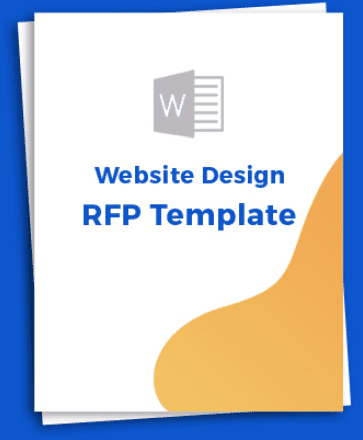
Ready to craft your own RFP?
We’ve already done the heavy lifting for you with our handy Website Request for Proposal Template. It’s based off the lessons from this guide, and specific for website design projects. Simply download the RFP template, fill in the blanks with your own details, and save yourself the headache of starting from scratch.

Get Your Website RFP Template
Fill out the form below to received the web design RFP Word template, easy as pie fill in sections. What are you waiting for? Get it in your inbox now!





